My Dog is Dog Aggressive: What Can I Do About It?
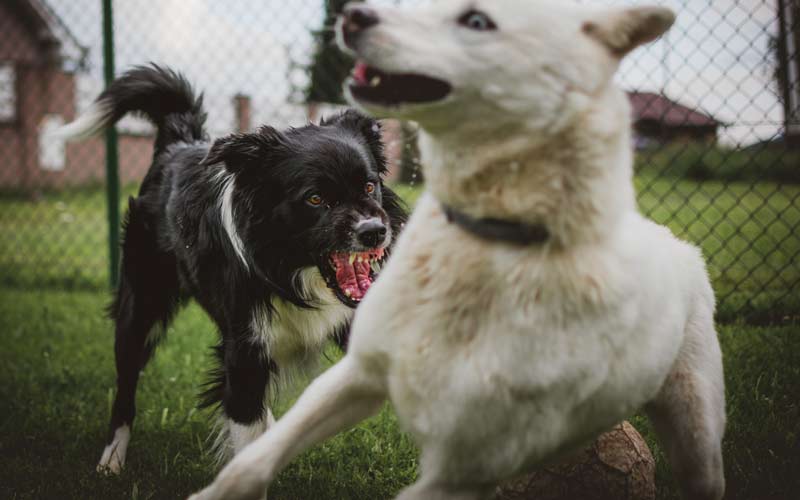
One of the most common problems that dog owners email us about is unwanted dog aggression. There are many reasons for dogs being aggressive to other dogs, cats, or other animals. This article will only address the most common reasons.
To begin to understand the solution to dog aggression one must first understand what triggers the aggression. There are 20 to 30 categories of dog aggression. We will only touch on a few in this article.
One of the more common reasons a dog becomes dog aggressive is because that dog has been attacked by another dog. Pet owners need to understand that once their dog has been attacked or even scared by another dog that pet dog will be dog aggressive its entire life. This only needs to happen one time to become a lifelong problem.
I compare this to anyone who has ever been robbed or mugged. This has a lifelong effect on how that person perceives the world.
Pet owners always need to be aware of their dog's personal safety.
They should never allow their puppies to be around strange dogs. To do so is the same as playing Russian roulette with their dog's mental stability. If their puppy is attacked, they will then own a dog aggressive dog.
The same goes for pet owners who take their dogs to dog parks. There is no way of knowing if one of the dogs in that park has dominance or aggression issues. If there is a dog aggressive dog at the park and it attacks your dog - you now have a dog aggressive dog because one dog attack is all it takes to change a happy-go-lucky dog to a dog aggressive dog.
Dogs look to their pack leader for protection
It is vitally important that dog owners understand their puppy, their young adult, and many times their adult dog looks to their owner (or pack leader) for protection when faced with a threat.
Too often new dog owners think their dog should try and protect himself and act tough. Nothing could be further from the truth. Our dogs look to us for leadership and protection. It's part of their genetic makeup. Owners that stand by and allow strange dogs to approach their dog lose face in the eyes of their dog. Once a dog knows that its owner is not going to protect them, its fear takes over and they move into fight or flight. At first many just bark and try to act aggressively. When they see this works, their aggressive display increases in intensity.
When I am out for a walk and a strange dog approaches, I ask the owner to get control of his dog. In the beginning, I am friendly. I tell them my dog gets nervous around strange dogs and I do not want their dog to interact with my dog.
If the owner does nothing to stop their dog from approaching my dog, I become threatening and aggressive towards their dog. In other words, I do what's necessary to protect my dog and to show my dog that I am indeed its pack leader. This is a huge thing in the eyes of your dog. It goes a long way towards your dog seeing you as a leader.
I begin with a serious warning. For example, “GET AWAY AND GO HOME!”
If this does not work, I will advance on the dog with direct eye contact and a loud deep-throated threatening warning. 99.9 % of the time this is all it takes for the other dog to turn and leave.
I always carry a stout walking stick when I walk my dogs, if the verbal warning doesn't convince the other dog to leave, I will use the walking stick if the dog moves in on my dog. The bottom line is I am not going to take a chance that a strange dog will attack my dog. If the owner has a problem with that - well that's their problem and not mine. I am not out there to make friends. I have enough friends and I don't want to be friends with irresponsible pet owners.
If by chance, the other pet owner chooses to get law enforcement involved because you cracked their dog with your walking stick (or pepper gas), you simply tell them that you were afraid for your personal safety and that you were protecting yourself from an unleashed dog that was out of control.
Rank drive within the dog pack
Very few new dog owners understand how strong a dog's genetic pack drive is. From the time a puppy comes out of the mother, it is programmed with very powerful genes that affect their dog's behavior. The strongest of these genes is pack drive.
When we bring dogs into our homes their pack drives affect their behavior in how they interact with family members.
I saw a perfect example of this back in the 1990s. My personal dog was good with almost all people except my 16-year-old son. When my dog saw my son, his tail went up, his body stiffened, and he would growl at my son. My son had never done anything to this dog. This was a dominant 2 ½-year-old dog.
My dog did this because he was trying to increase his pecking order in our family pack. In other words, he thought he should be at a higher level in the pack than my son. It was my job to either control the environment this dog was in (which means he was never allowed to be around my son when I was not there) or it was my job to teach the dog that my son was off-limits. This is the same thing that all pet owners need to do with small children and dogs.
Some people mistakenly think they need to teach their dogs that their children are a higher-ranking pack member. That's not the right way to look at the issue. You cannot make a dog look at a 2-year-old child as a higher-ranking pack member. That's simply not going to happen. But you can teach a dog that the child is absolutely off-limits. This is either done by never allowing the dog to be around the child or it can be done through training. With that said the trainer needs to be a skilled trainer. It begins with always having the dog on a leash, even in the house.
When I see this happen, I verbally correct the dog. Every instance of unwarranted aggression should result in some form of correction. How strong of a correction would vary depending on the dog and the situation.
Three dogs are a dog pack
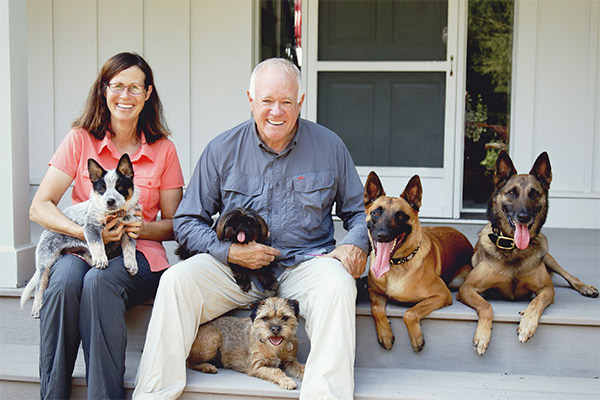
Many people have more than one dog in their household. They may be able to control two dogs in a family situation without problem, but the minute they add a third dog they have a dog pack.
When a dog pack is established in a home the balance of nature changes and it is only a matter of time before these animals begin to establish their own pecking order.
Many times, dogs work this out on their own. They determine who is the highest and lowest ranking member of their pack. Unfortunately, sometimes it does result in a dog fight.
It's important for these people to know how to safely break up a dog fight. For this reason, I am not a fan of people trying to raise three dogs at the same time. Doing so requires additional handling skills that most people are not prepared to deal with. I have an article called The Groundwork to Establishing Pack Structure with Adult Dogs. You may want to review this. It may be helpful for you to read How to Introduce a New Dog into a Home with Other Dogs.
The solution to dog aggression can start with the handler making good decisions as they raise their puppies and not allowing dogs to live (unsupervised) in a dog pack.
But if you have come to my website to read this article you probably already have a dog aggressive pet and need to know how to change his behavior.
Obedience training is not always the solution
Too often the dog does not really see the owner as his true leader. Dogs can often love their owner but not respect them. The solution to the animal aggression problems starts with changing this pack leader issue. It begins with the owner learning how to be a pack leader. We have a DVD that goes into detail on this. It's titled Establishing Pack Structure with the Family Pet.
Many people with dog aggression problems think that they only need to take their dog to obedience classes to fix the problem. Unfortunately, those people are often dead wrong. While obedience training is an important part of controlling an aggressive dog it is not in and of itself the solution. The solution is to show the dog who the pack leader is and then to teach the dog that unwarranted aggression will not be tolerated.
How that is done will depend on the dog. Some dogs will need to be corrected when they show aggression, some dogs will need to learn that every time they act aggressively, they are put in a dog crate. Some dogs are so strong and so aggressive that they are never put in a situation where they are off-leash and around other dogs. For new owners, I recommend that you get my Basic Dog Obedience training DVD, a prong collar, and a dominant dog collar. I seldom train a dog without a prong collar and or a remote collar. I call prong collars power steering on dogs.
Keep in mind that prong collars when used with a dog that is acting aggressively, can often over stimulate a dog and cause the dog to become more aggressive (often times, towards the handler). A preferred training tool would be a dominant dog collar.
There are also several subtle things that can also go into the process of establishing rank within a pack. I will not cover all these items in this article but rather point you to the article I have written on Dealing With the Dominant Dog.
Corrections to fix the problem
Using corrections to fix dog aggression is beyond the scope of this article. It's often an important part of the solution but there are so many variables that new owners should take some time to educate themselves and find a trainer that really understands the issue of dog aggression.
A serious word of warning here. The vast majority of so-called professional dog trainers lack experience in dealing with aggressive dogs. I know because we get emails from these people all the time.
Electric collars and dog aggression
I wrote an entire article on dog aggression and electric collars. There is a right and wrong way to approach remote collars and dog aggression. If you are interested in how to do this, read the article.




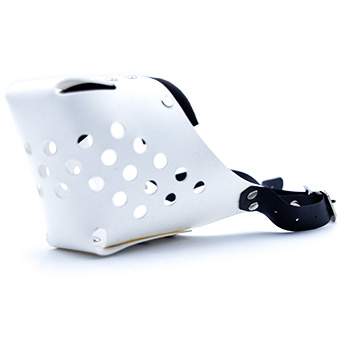
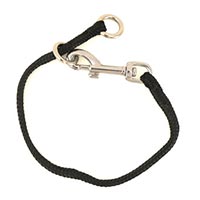
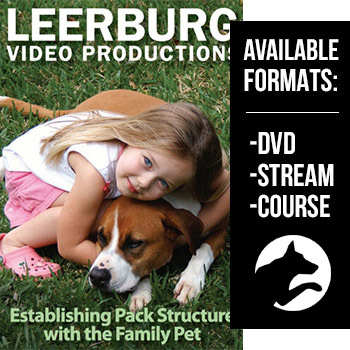

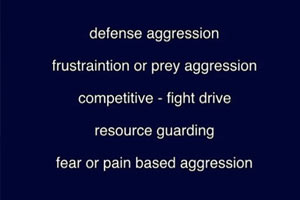
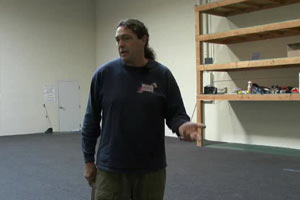

Ask Cindy.